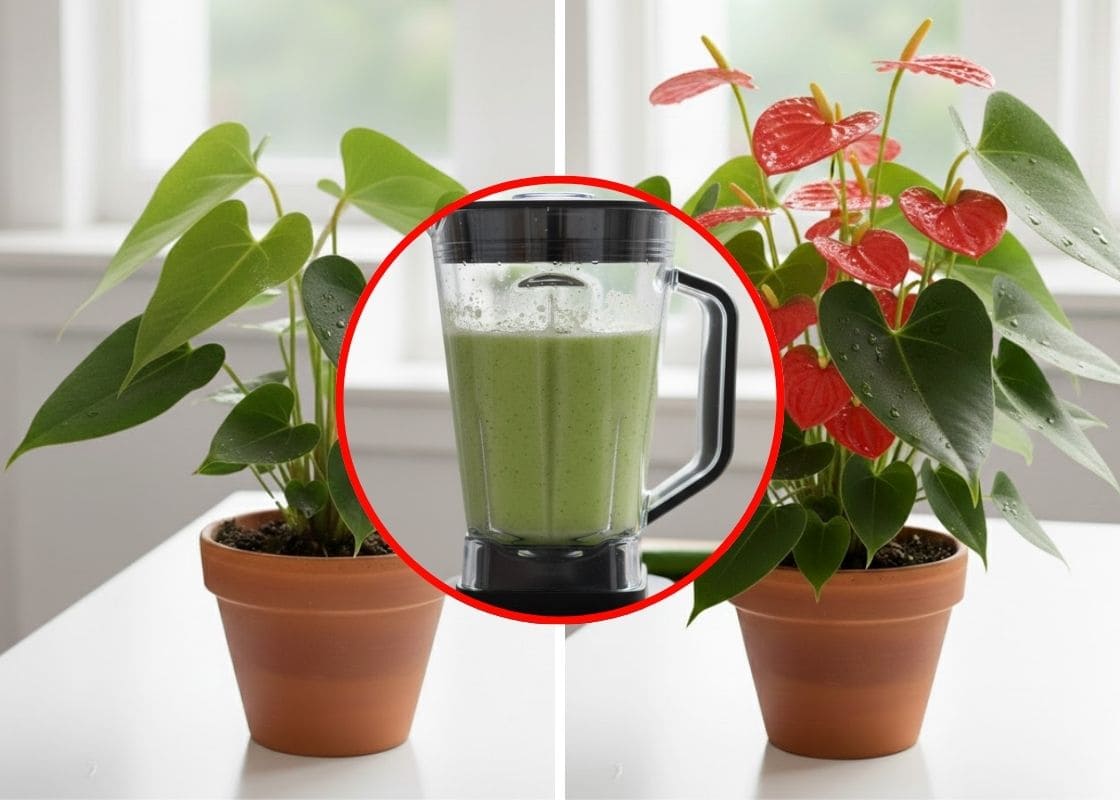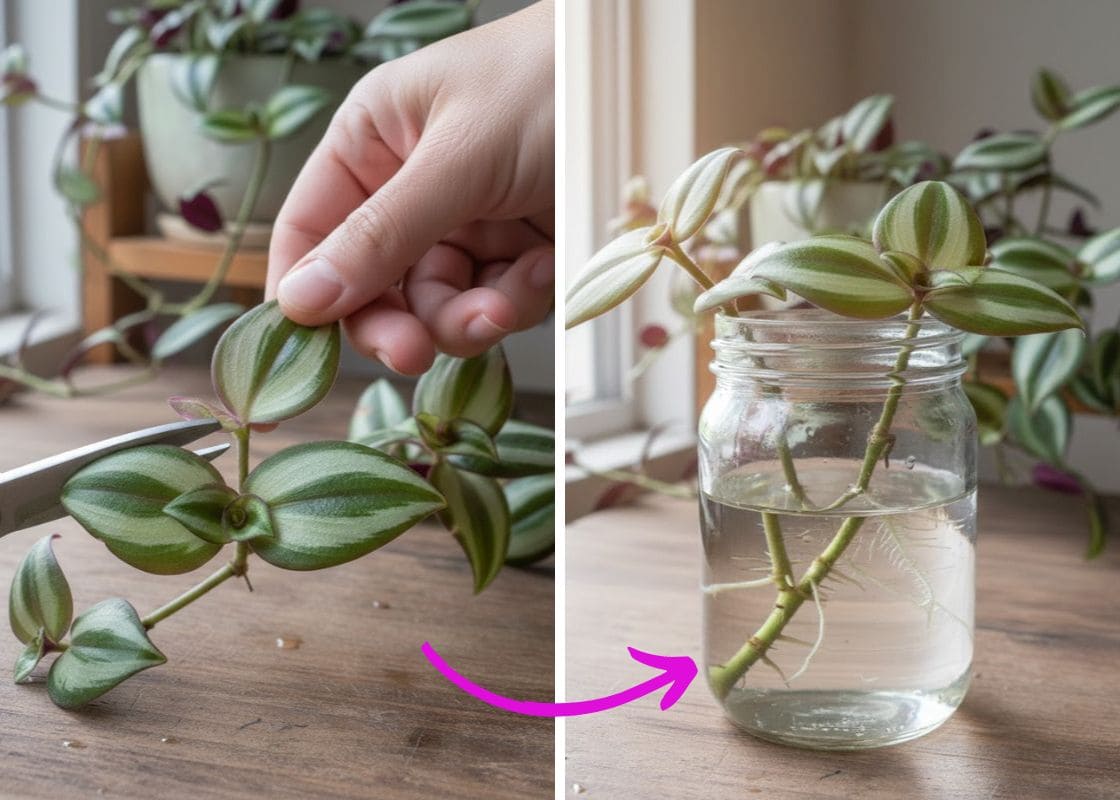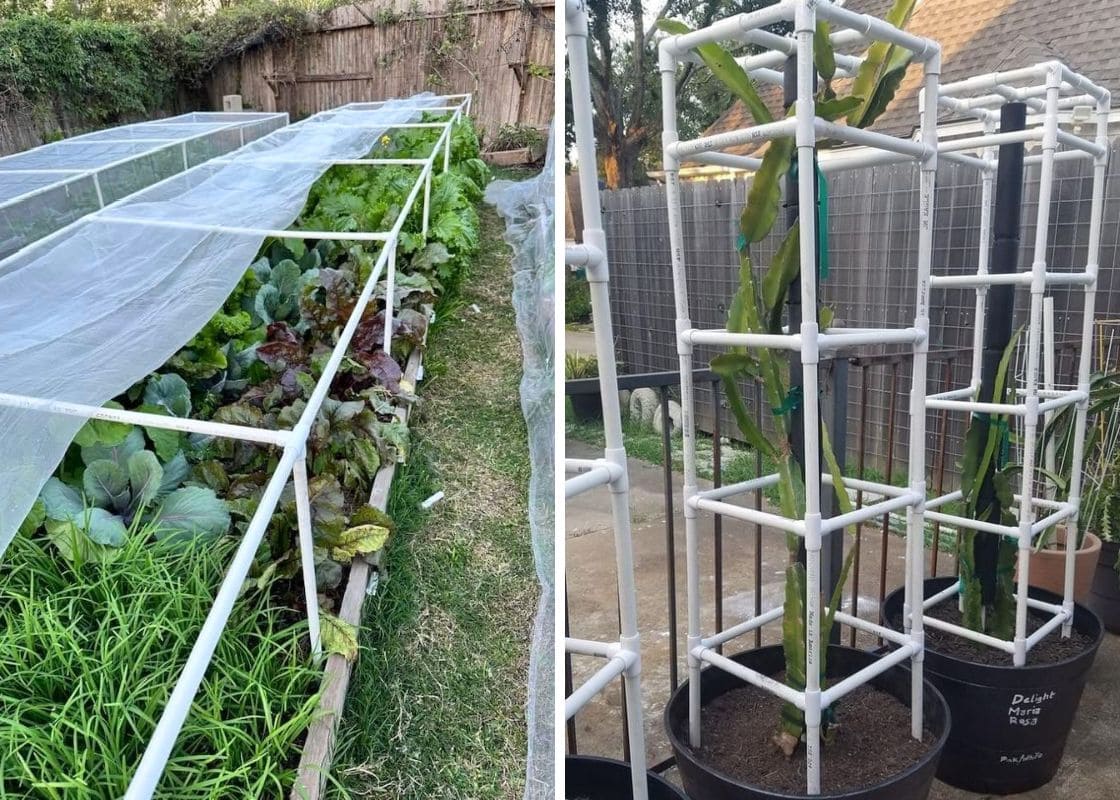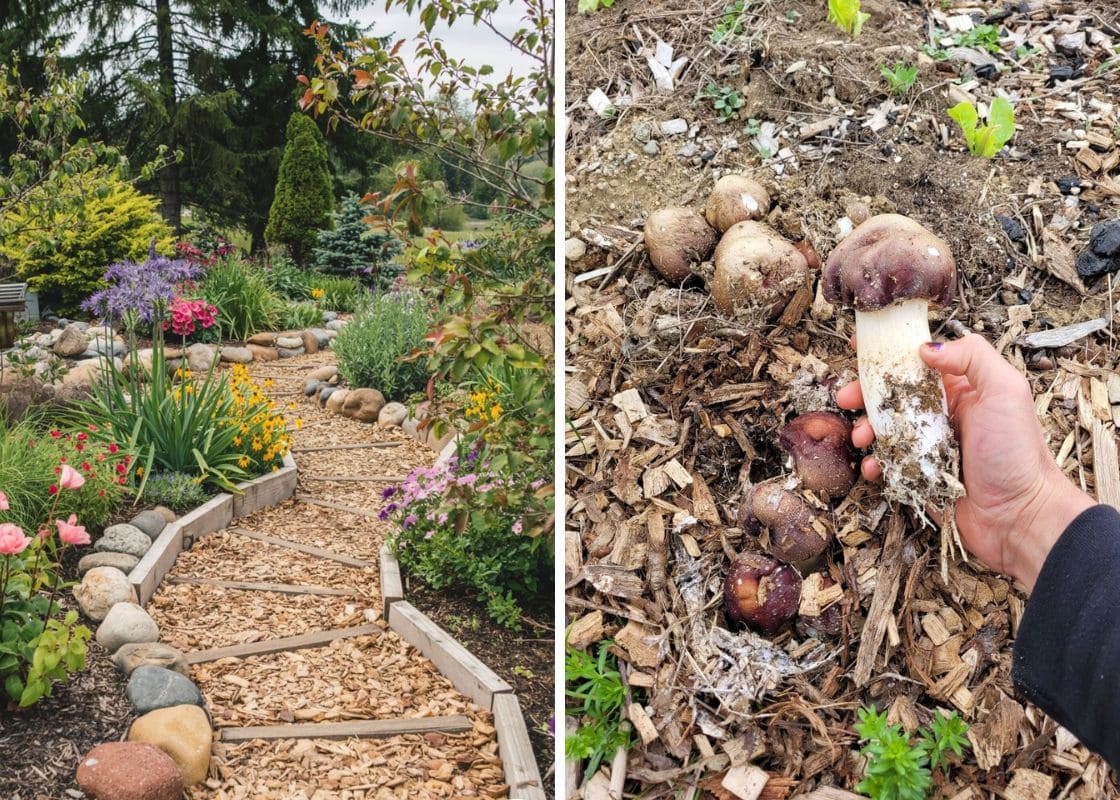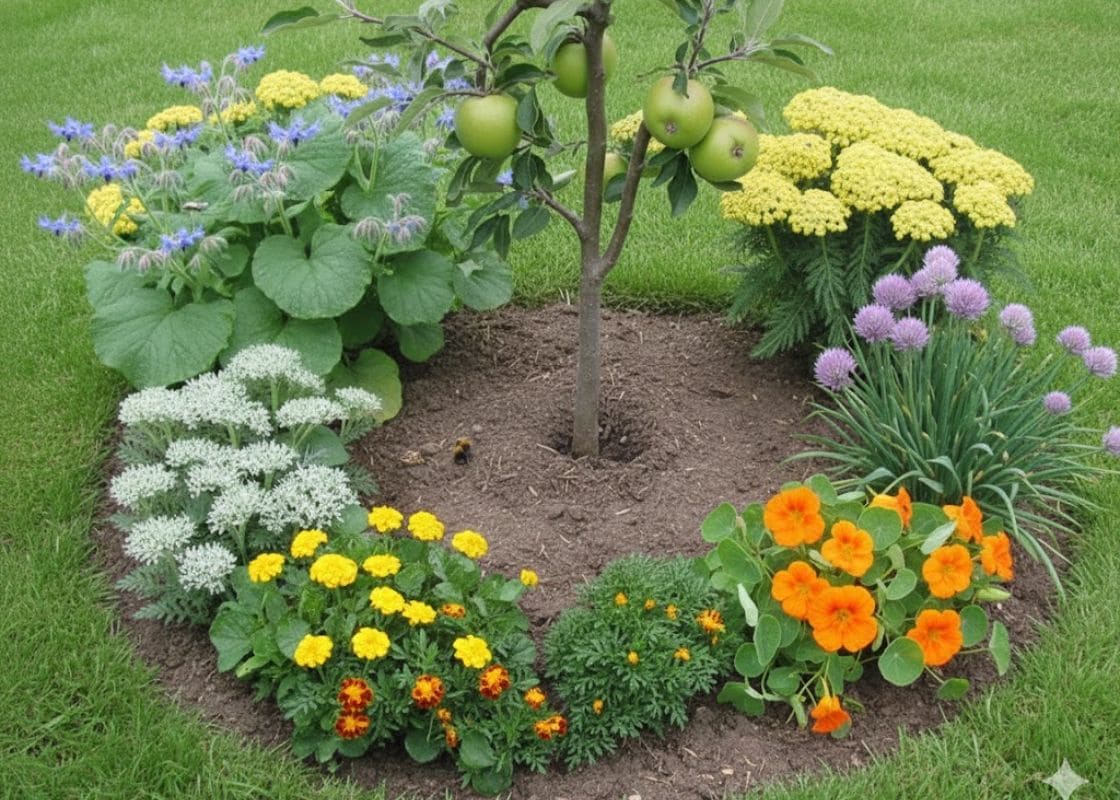Autumn is the season when leaves undergo a beautiful transformation, resembling a vibrant festival organized by nature itself. Admiring the best fall trees below, you will be deeply impressed by the beauty that nature bestows on them. Many of them can adapt to different climates, making a perfect choice for novice gardeners who are looking for trees with striking foliage and unique shade.
In addition, besides its stunning appearance, don’t forget to pay attention to their characteristics to make sure your favorite trees thrive well in your garden.
#1. American Hornbeam
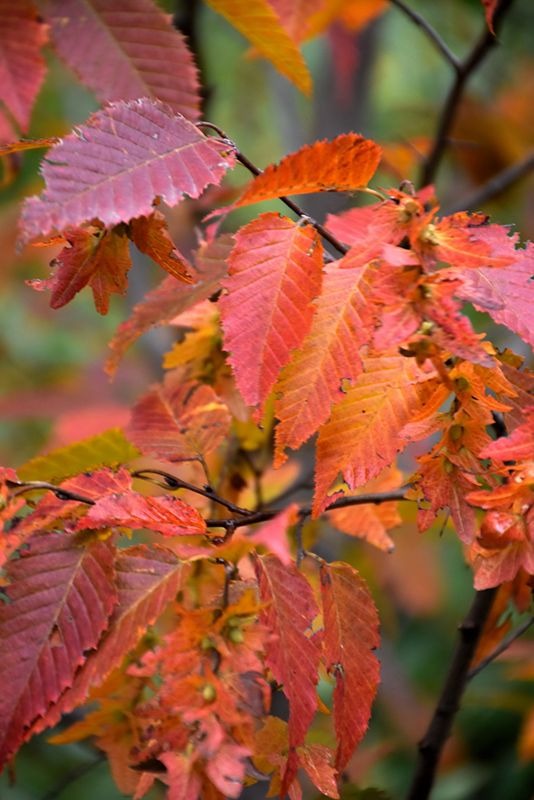
The first tree in the list is a familiar choice with many gardeners. The American Hornbeam, also known as Musclewood or Ironwood, displays striking orange and red foliage in the fall. These trees prefer moist, well-drained soil and partial shade.
#2. American Sweetgum
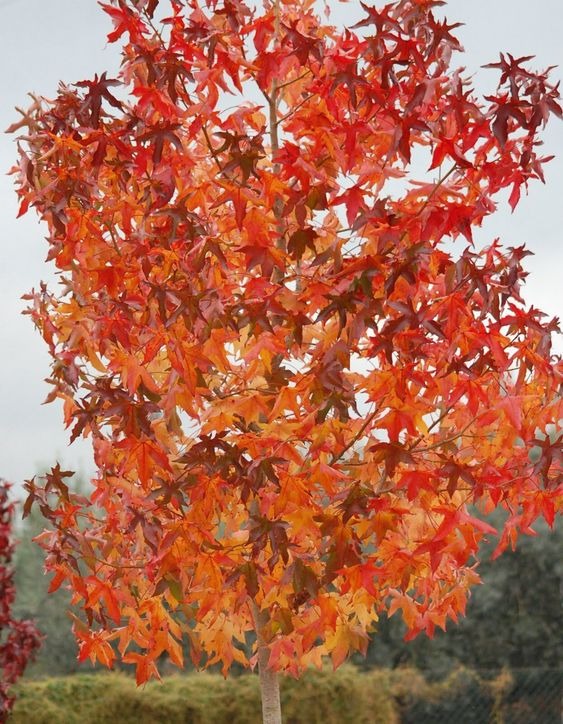
If you’re in the crossroads and don’t know which tree you should choose, oft for this one as it offers a wide range. The American Sweetgum, similar to the Sweetgum, offers outstanding fall foliage in shades of red, orange, and purple. These trees also prefer moist, well-drained soil and full sun to partial shade.
#3. Bald Cypress
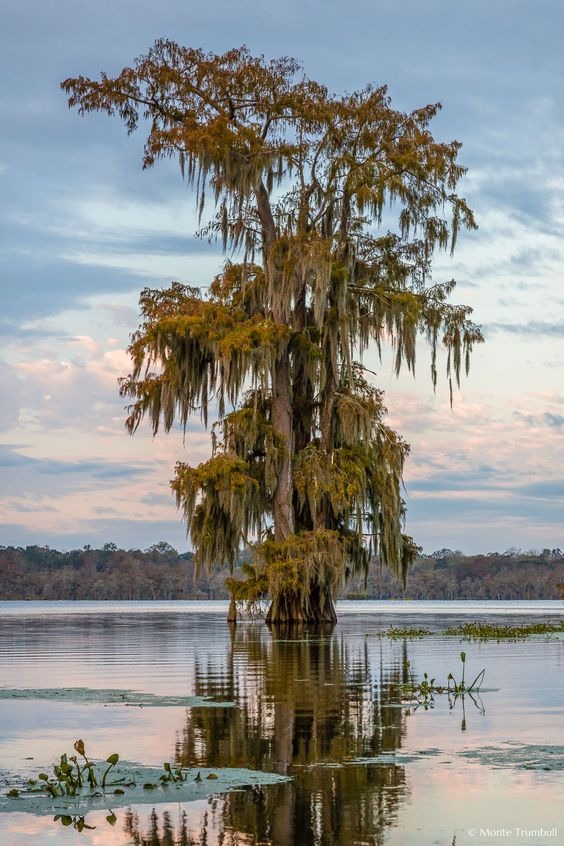
If you’re lucky enough to have a pond in your garden, this tree if for you. Bald Cypress trees are deciduous conifers, known for their unique, feathery foliage that turns a striking coppery orange in the fall. They tolerate wet conditions and thrive near water bodies.
#4. Birch Tree

Birch Tree is one of the best fall trees you should plant for striking foliage. It features aromatic, oval leaves that change into a striking yellow color in the fall, thrive in well-draining soil and are relatively low-maintenance. I believe these notable features make it a perfect choice for most gardeners.
#5. Black Tupelo
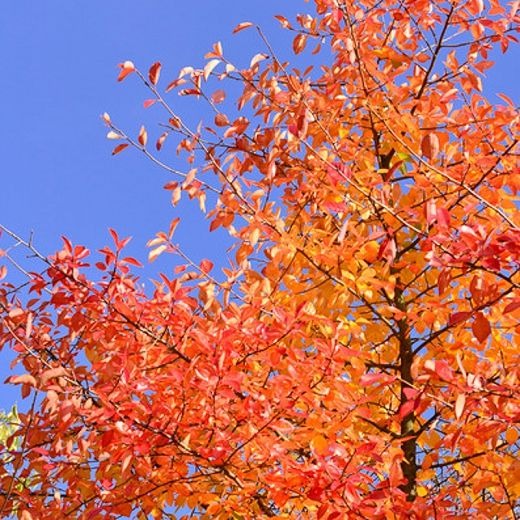
The Black Tupelo, also known as the Black Gum tree, transforms into a mesmerizing display of scarlet and deep purples in autumn. This native tree grows in moist, well-drained soil and full sun to partial shade. The tree grows moderately fast and you can enjoy its beauty right in your yard in no time.
#6. Dogwood
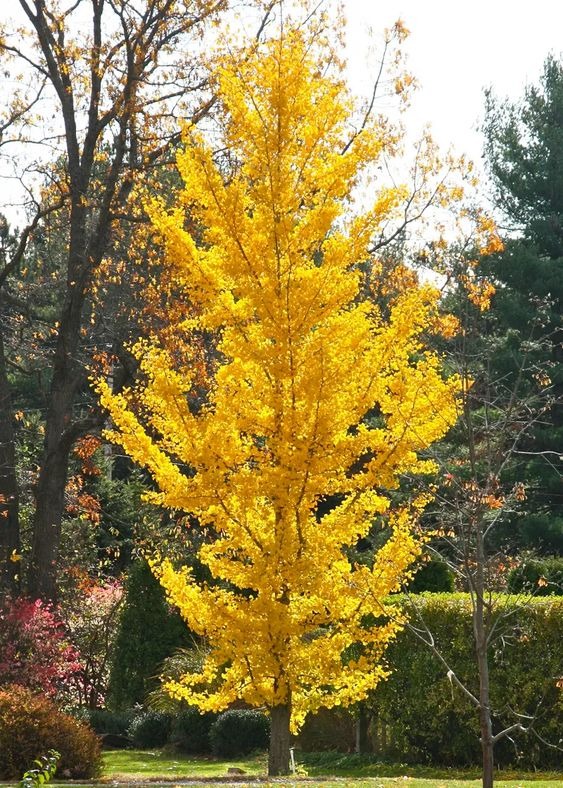
Dogwoods are famous for their charming, pink or red blossoms in spring, but they also offer lovely red foliage in the fall. Their leaves often take on deep shades, making them stand out in any garden. You should provide well-drained soil and partial shade to keep Dogwoods healthy.
#7. Ginkgo
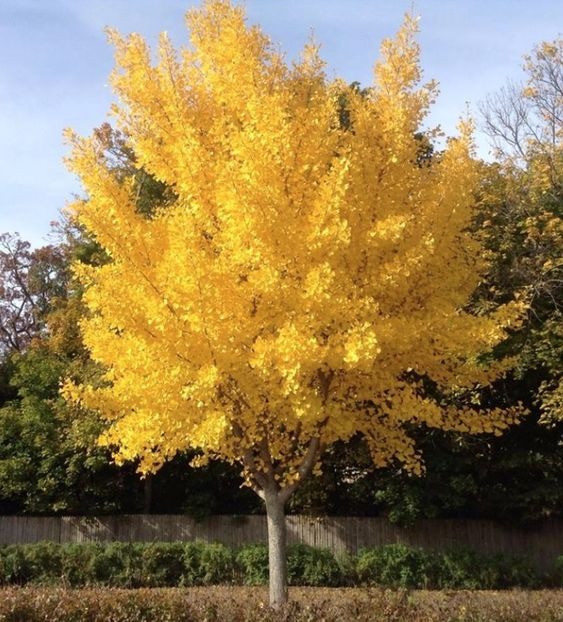
Ginkgo trees are like living fossils, with fan-shaped leaves that turn brilliant golden-yellow in the fall. When it exhibits its gorgeous foliage, it will be a highlight in your garden. Luckily, they are low-maintenance and adapt well to urban environments.
#8. Japanese Maple

Japanese Maples are prized for their delicate, palmate leaves that exhibit a range of fall colors, including red, orange, and burgundy. They require partial shade and well-drained soil to thrive in your backyard. You might be surprised to hear that they can survive in harsh conditions where other trees might struggle.
#9. Oak Tree
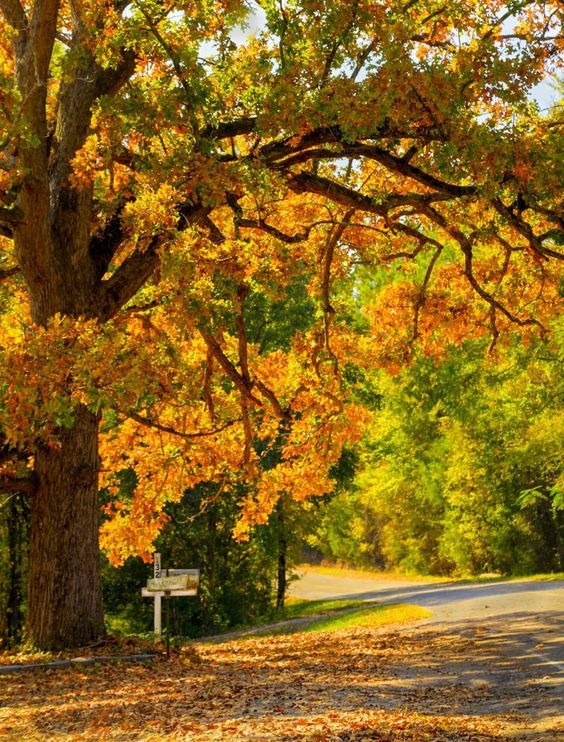
Oak trees, with their broad, lobed leaves, offer rich fall foliage in various shades, including red, brown, and russet. These majestic trees need plenty of space to grow and thrive in diverse soil types, making them a versatile addition to your landscape.
#10. Paperbark Maple
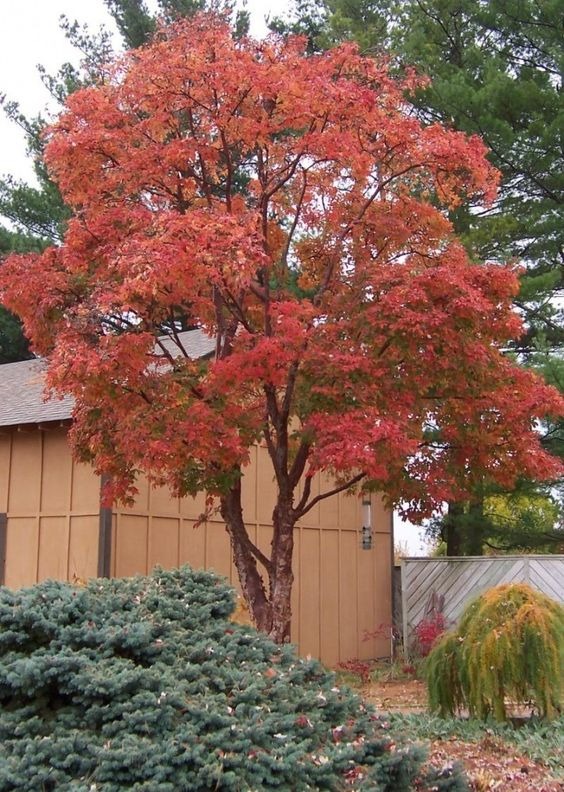
The Paperbark Maple is renowned for its cinnamon-colored, exfoliating bark, which complements its red and orange fall foliage. These maples grow healthy in well-drained soil and partial shade. Believe me, its foliage will create a striking contrast with other plants in your backyard.
#11. Red Maple
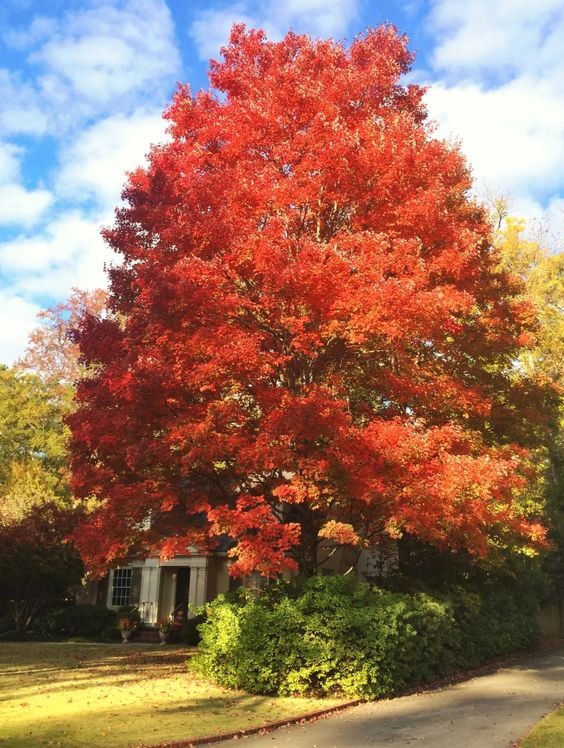
The Red Maple lives up to its name in the fall with brilliant red foliage. Its leaves often change to a reddish-purple hue, creating a striking contrast against the greenery. This adaptable tree prefers moist soil and is relatively low-maintenance.
#12. Scarlet Oak

The Scarlet Oak is aptly named for its stunning scarlet-red foliage in the fall. Its deeply lobed leaves create a bold statement in any landscape. To take care of these oaks, you should provide them with well-drained soil and ample sunlight.
#13. Serviceberry
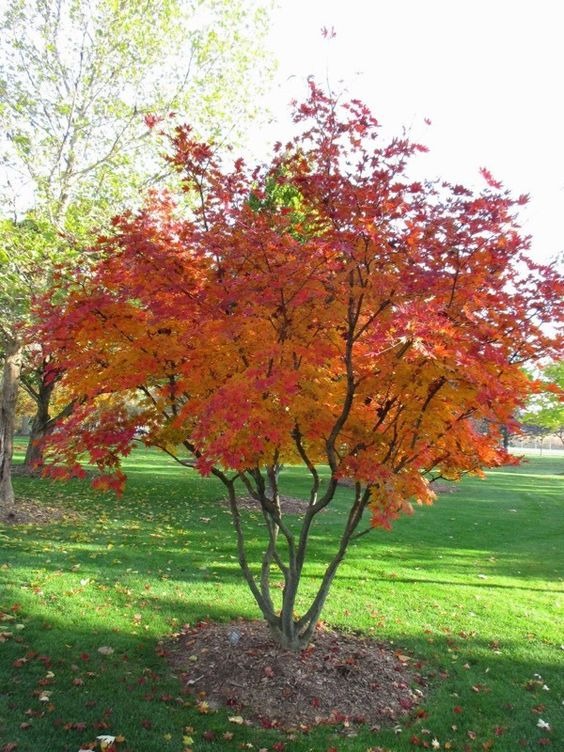
Serviceberry trees offer a stunning display of orange and red foliage in the fall. They are adaptable and can grow in various soil types, so even gardening novices can try to plant it in your garden or backyard.
#14. Shagbark Hickory
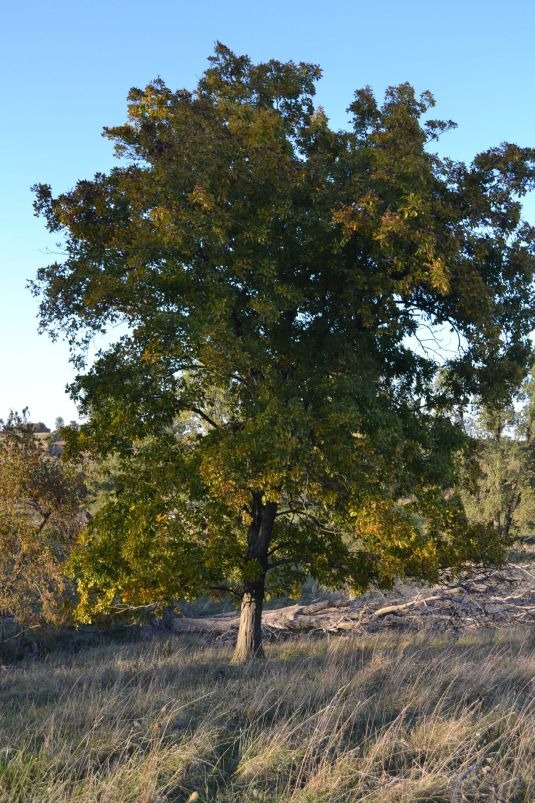
The Shagbark Hickory tree gets its name from its distinctive, shaggy bark. In the fall, its pinnately compound leaves turn brilliant shades of yellow and golden-brown, turning it into a bold statement in your landscape. Remember that these trees thrive in well-drained soil and full sun.
#15. Smokebush
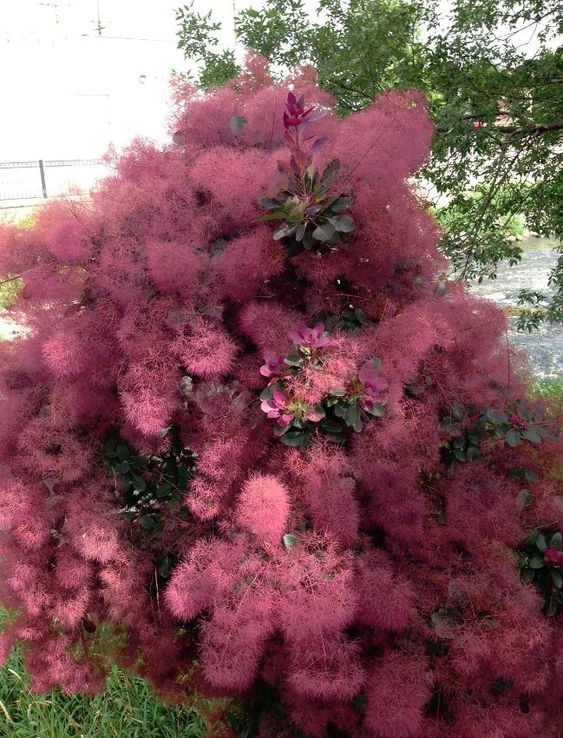
The Smokebush features oval leaves that turn shades of orange, red, and purple in the fall. Its airy, smoke-like flowers in summer add to its ornamental value. I guess when you see this tree is in full display, you want to make room for a smokebush tree in your garden.
#16. Sourwood
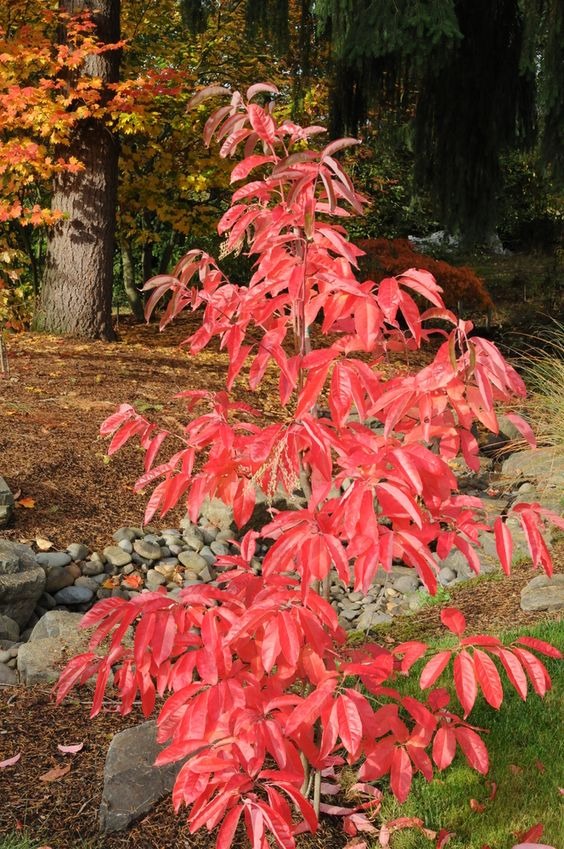
The Sourwood tree showcases glossy, green leaves in summer that transform into vibrant shades of crimson and purple in the fall. When the time comes, it will become a showstopper. It prefers acidic soil and is relatively easy to care for.
#17. Sugar Maple
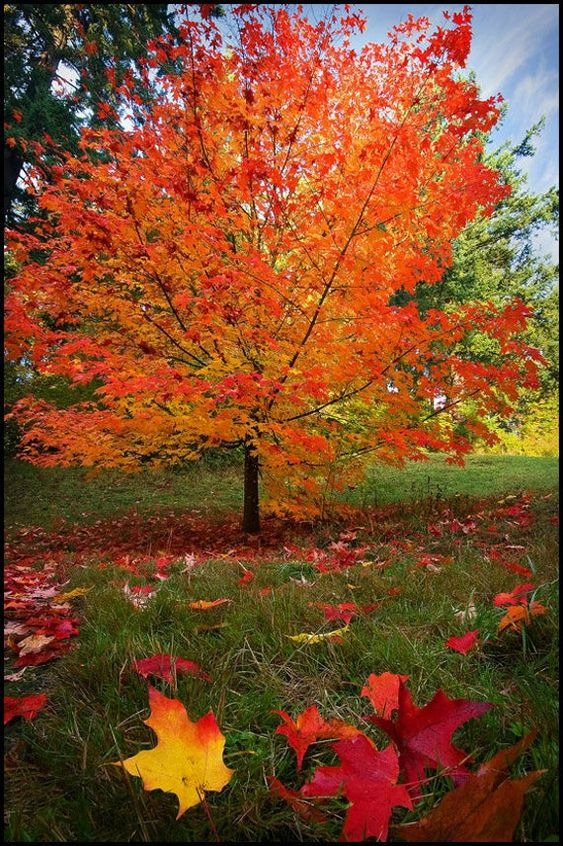
The Sugar Maple, renowned for its spectacular fall show, boasts vibrant, fiery shades of red, orange, and yellow. Its distinct, five-lobed leaves turn the landscape into a masterpiece each autumn. To keep your Sugar Maple thriving, provide well-drained soil, and ensure it receives adequate moisture and sunlight. You can check more tips to plant a maple here.
#18. Sweetgum
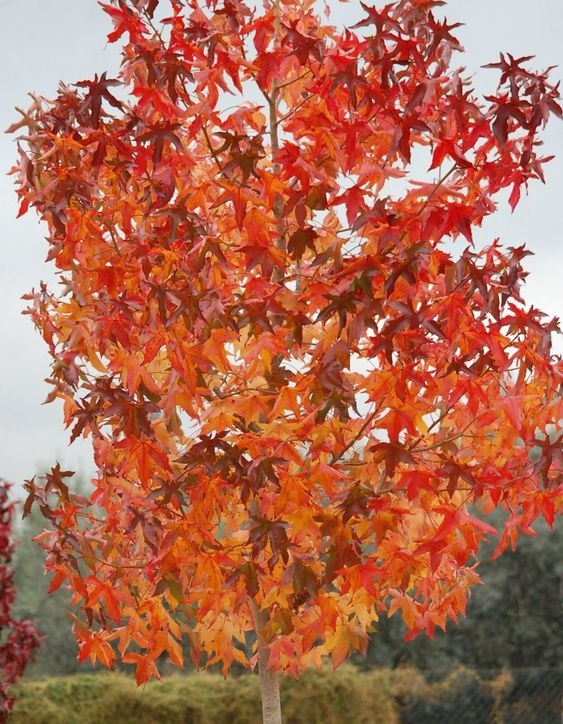
The Sweetgum tree produces star-shaped leaves that transition to stunning shades of red, orange, and purple during the fall. It’s a feast for your eyes thank to its unique spiked fruits add to its ornamental appeal. Sweetgums thrive in well-draining soil and benefit from regular pruning to maintain their shape.
#19. White Oak
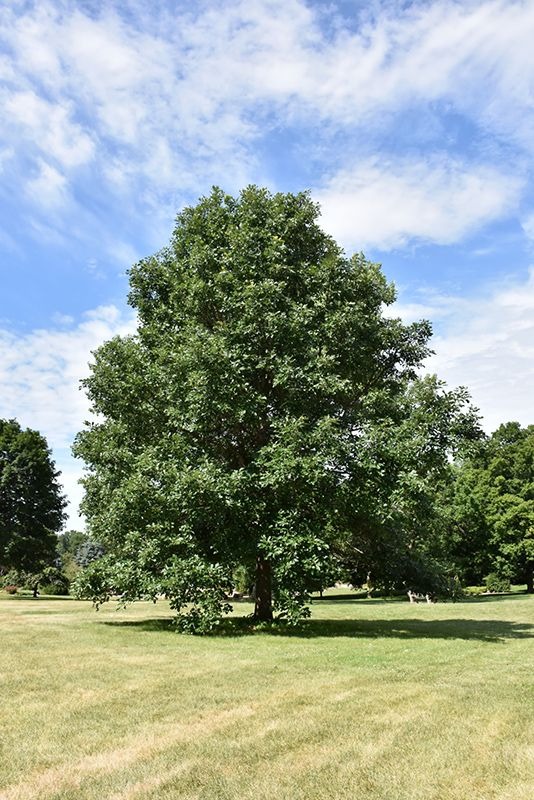
White Oak trees feature classic oak-shaped leaves that turn various shades of red, brown, and russet in the fall. The contrast between the dark bark and the bright foliage is stunning and eye-catching. These sturdy trees are adaptable and can tolerate a range of soil conditions.
#20. Witch Hazel
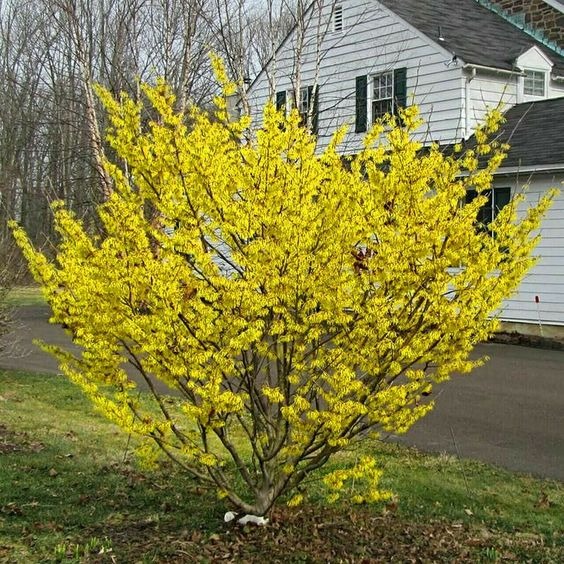
Witch Hazel trees are known for their unique, spidery flowers in late winter. In the fall, their leaves turn shades of yellow, orange, and red, making it one of the best fall trees in the garden. These small trees thrive in well-drained soil and partial shade.
#21. Amur Maple
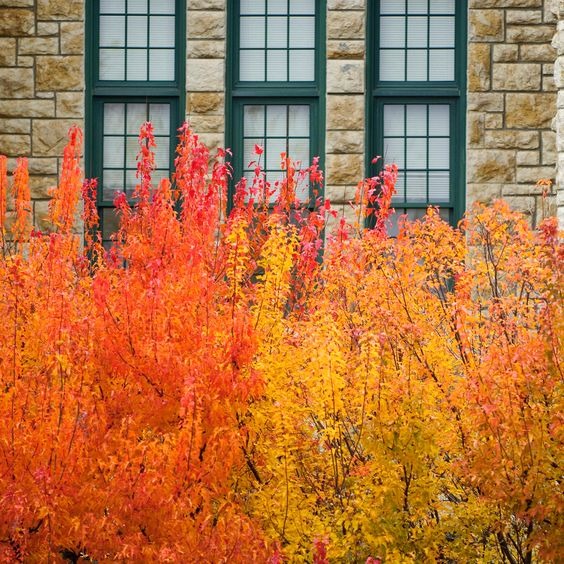
Amur Maples are small, multi-stemmed trees with three-lobed leaves and are often valued for their compact size and adaptability. In the fall, their leaves turn vibrant shades of red and orange, making them stand out in the landscape.
#22. Burning Bush
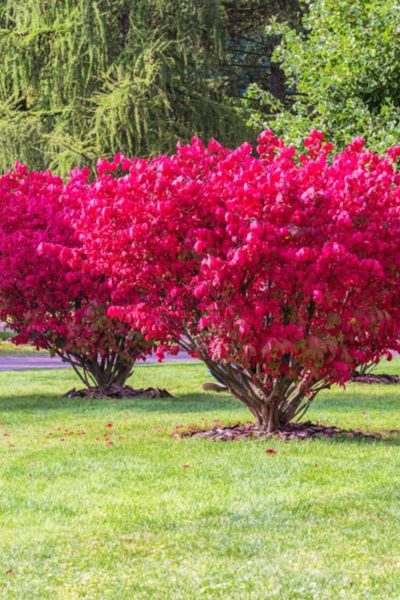
Burning bush is a type of shrub that is native to China and surrounding areas. It is known for its bright red leaves in fall that look like they are on fire. Burning bush is a popular landscape plant that can be used as a specimen or a hedge, however you should be careful as it’s poisonous to people and pets.
#23. Chokeberry

Chokeberries are deciduous shrubs known for their simple, elliptical leaves and small, white or pink flowers in spring. Their foliage undergoes a transformation in the fall, turning brilliant shades of red, purple, or even black, depending on the variety. They’re relatively low-maintenance but benefit from occasional pruning to remove dead wood.
#24. Fothergilla
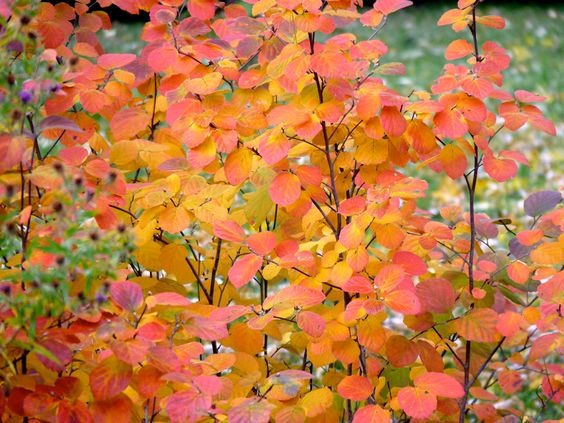
Fothergillas are deciduous shrubs prized for their bottlebrush-like, fragrant flowers and attractive blue-green leaves. Their fall foliage is a wonder, with leaves turning brilliant shades of red, orange, and yellow.
#25. Oakleaf Hydrangea
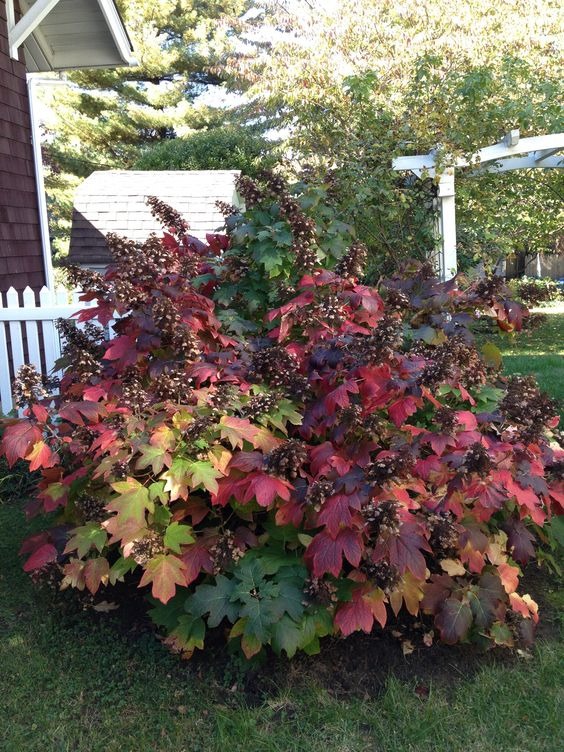
Oakleaf Hydrangeas are shrubs with distinctive, oak-like leaves and cone-shaped clusters of white flowers. Their large, lobed leaves turn shades of red, burgundy, and bronze in the fall, adding to their ornamental value.
#26. Serviceberry

Serviceberry trees offer a stunning display of orange and red foliage in the fall. When planting, you don’t have to worry much as they are adaptable and can grow in various soil types.
#27. Stewartia

Stewartias are small to medium-sized trees with striking, camellia-like flowers and exfoliating bark that adds winter interest. Their leaves turn captivating shades of orange, red, and purple in the autumn, providing a beautiful contrast to the peeling bark.
#28. Sumac
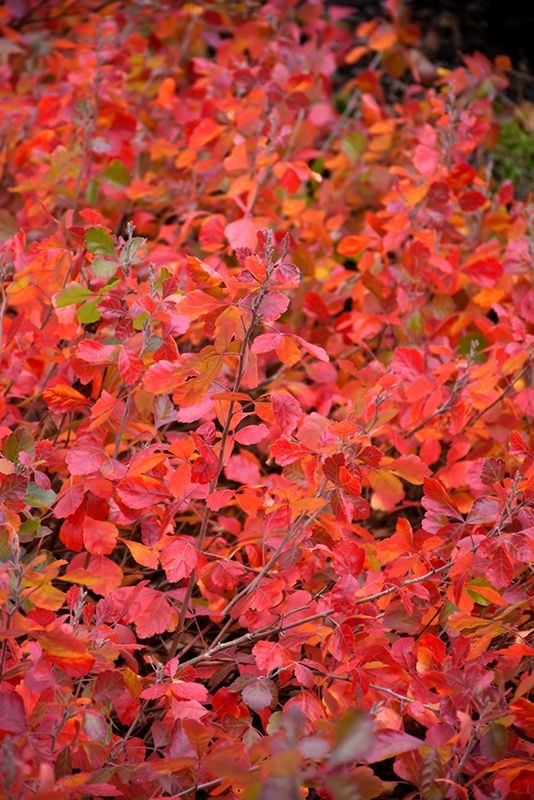
Sumacs are shrubs or small trees with pinnately compound leaves. Some species, like Staghorn Sumac, produce fuzzy, red fruit clusters. They offer some of the most brilliant fall foliage, with leaves turning shades of red, orange, or even deep purple.
#29. Viburnum
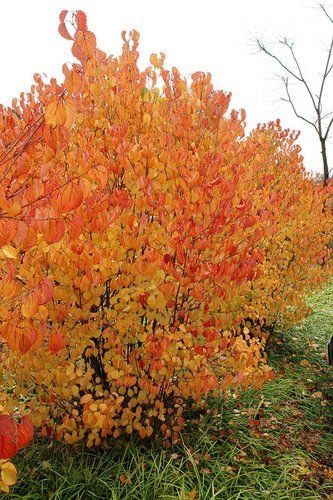
Viburnums are versatile shrubs known for their clusters of white or pink flowers and attractive, often glossy leaves. Depending on the species, Viburnums can display various fall colors, including red, purple, or burgundy.
#30. Virginia Sweetspire
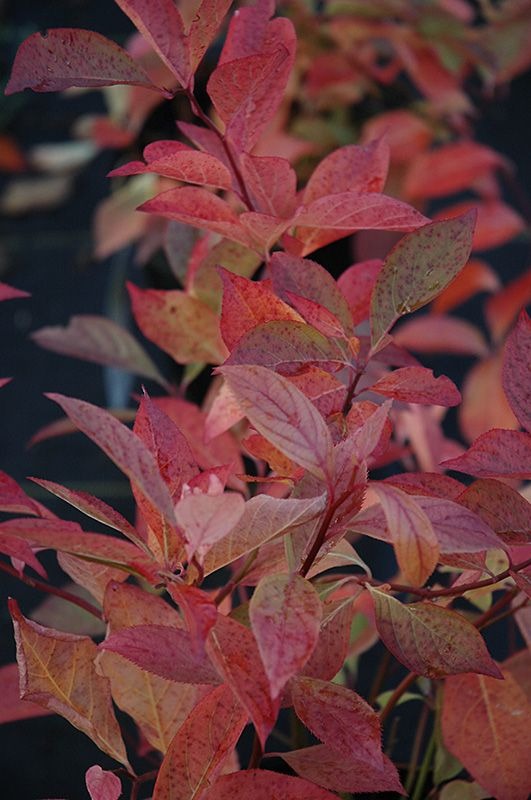
Virginia Sweetspire is a deciduous shrub known for its arching branches, fragrant white flowers, and attractive foliage. In the fall, its leaves turn vibrant shades of red, orange, and purple, creating a captivating display.
Planting any of these best fall trees in your landscape will ensure a breathtaking fall foliage display that will leave your garden and your spirits brilliantly uplifted each autumn. Moreover, they will not only provide stunning fall foliage but also add year-round beauty to your outdoor space. Now, let us know which trees have you fallen in love with, and don’t forget to hit the Pin button for future reference.



